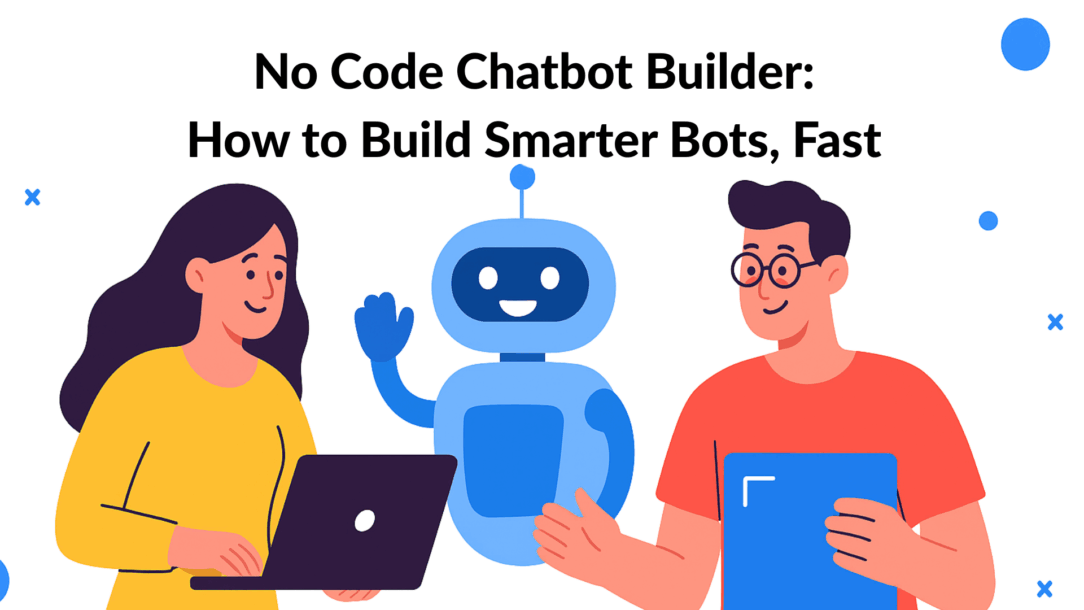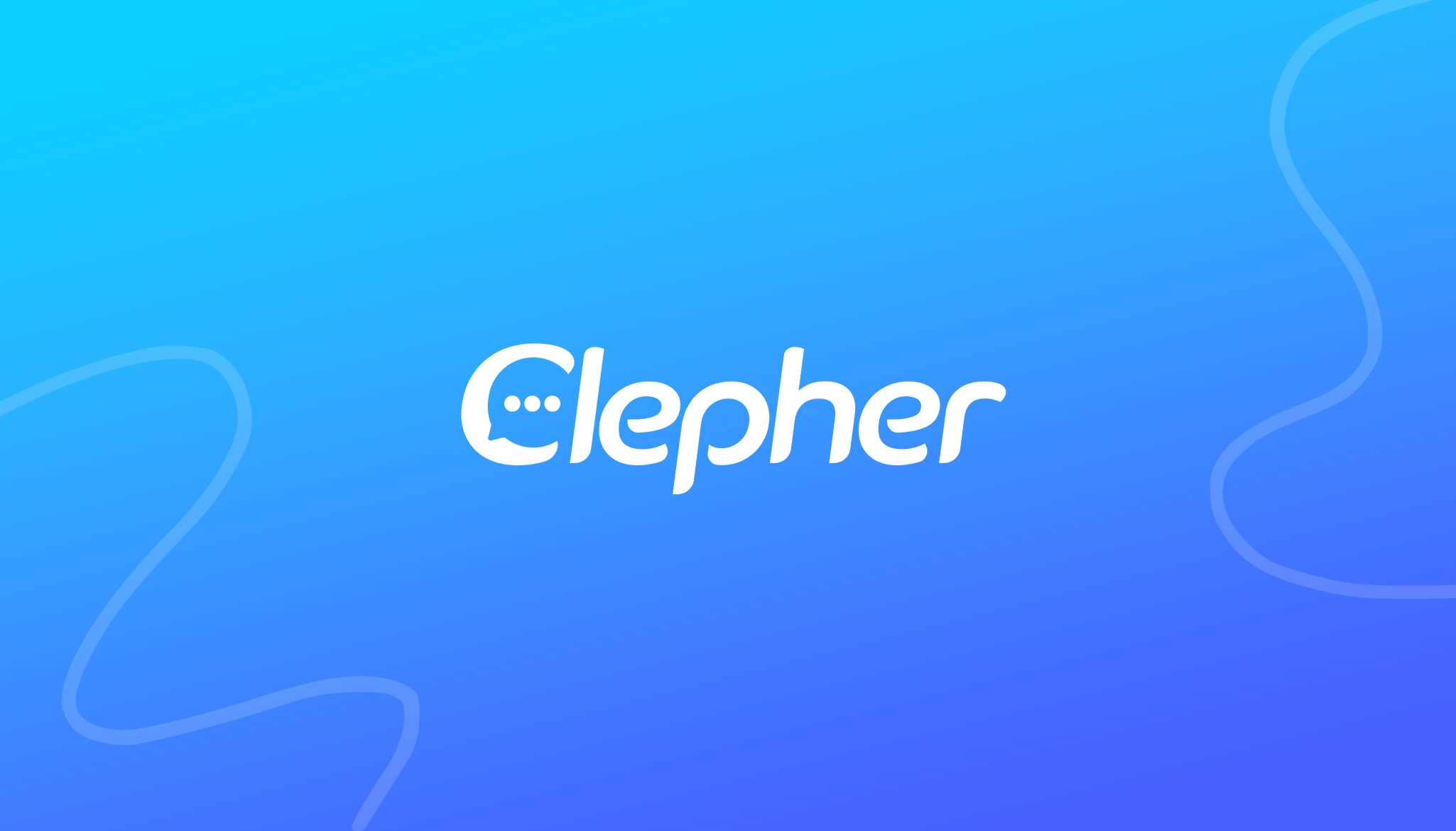A no-code chatbot builder is a game-changing tool that lets you create powerful, automated conversational bots without writing a single line of code. Think of it as building with digital Lego blocks. Instead of complex programming, you use a visual, drag-and-drop interface to design how your bot interacts with people.
This guide will give you actionable insights into how these tools work, how to choose the right one, and how to launch a chatbot that drives real business results.
Unlocking Conversations Without Code
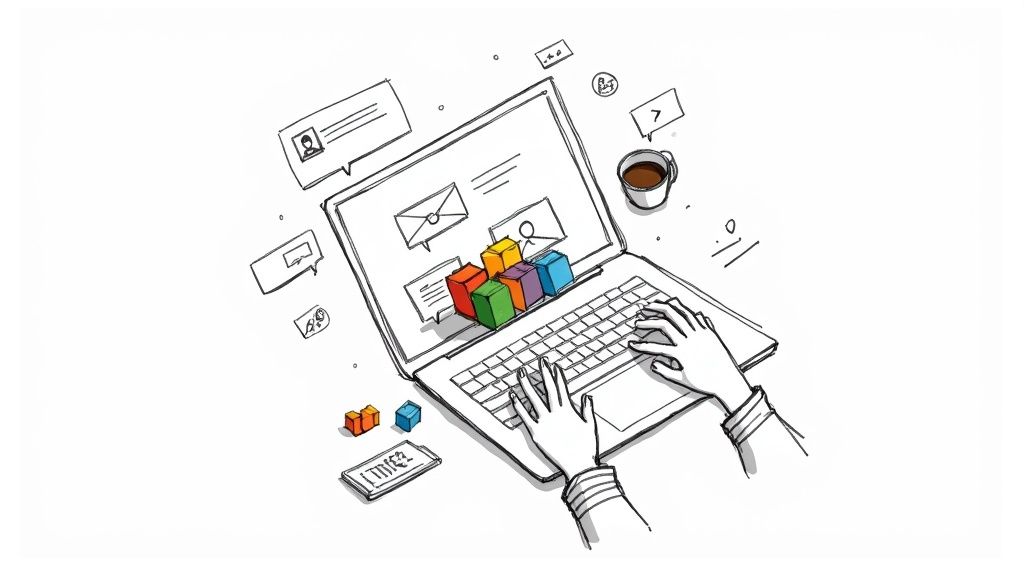
no code conversations
Not long ago, building a chatbot was a major project. It required hiring specialized developers and waiting weeks—or months—for a finished product. The process was slow and expensive, putting powerful automation out of reach for most businesses.
No-code chatbot builders completely change the game. Instead of wrestling with programming languages, you work in an intuitive visual editor. You can map out conversation flows, set up triggers based on user actions, and connect pre-built elements to handle common requests.
This approach makes sophisticated AI accessible to everyone. A marketing manager, a small business owner, or a customer support lead can now build a digital assistant that works around the clock.
From Manual Tasks to Automated Engagement
The real transformation a no-code chatbot builder delivers is in how it automates your audience engagement. It takes repetitive, time-consuming tasks and hands them off to a system that works 24/7, freeing up your team to focus on high-impact work that requires a human touch.
Here are a few practical business use cases:
- Answering FAQs: Imagine an e-commerce store constantly asked about shipping times. A chatbot can instantly provide tracking info and policy details to hundreds of customers simultaneously, cutting down support ticket volume.
- Capturing Leads: A bot on a marketing agency’s website can greet visitors, ask qualifying questions (“What’s your monthly ad budget?”), capture their contact info, and schedule a discovery call directly on a consultant’s calendar.
- Guiding Customers: For a Shopify store, a chatbot can act as a personal shopper. It can ask, “Who are you shopping for?” and recommend products, helping customers find the perfect item and guiding them through checkout.
This isn’t just about saving time; it’s about creating a better, more responsive experience for your customers. The global no-code market is projected to hit $11.2 billion by 2025, driven by the tangible results these platforms deliver.
How No-Code Chatbots Transform Business Functions
Here’s a quick breakdown of how different departments can use a no-code chatbot builder to achieve specific goals.
| Department | Primary Use Case | Key Benefit |
|---|---|---|
| Marketing | Lead Generation & Qualification | Capture high-quality leads around the clock and pre-qualify them for sales. |
| Sales | Appointment Scheduling | Automatically book demos and meetings with qualified prospects. |
| Customer Support | Answering FAQs | Provide instant answers to common questions, reducing support ticket volume. |
| Human Resources | Onboarding New Hires | Guide new employees through initial paperwork and answer their first-day questions. |
| E-commerce | Product Recommendations | Act as a personal shopper to help customers find what they’re looking for. |
As you can see, the applications are practical and deliver immediate results, making chatbots a versatile tool for almost any part of a business.
A no-code chatbot builder isn’t just a piece of software; it’s a strategic tool that allows you to be present and helpful in every customer conversation, at any time of day, without scaling your headcount.
The Power of Visual Building
So, how does this work in practice? Most no-code platforms use a drag-and-drop canvas. You might start with a “Welcome Message” block, then connect it to a “Button” block offering choices like “Track My Order” or “Ask a Question.” Each button then links to its own conversational path.
This visual approach makes the entire process easy to understand. You can see the conversation laid out in front of you, making it simple to spot gaps, refine the flow, and improve the user journey. For anyone ready to get started, you can learn how to build a chatbot with a simple, step-by-step guide.
Ultimately, a no-code chatbot builder removes the technical barrier between your business goals and execution, putting the power of conversational AI directly in your hands.
Core Features That Make No-Code Chatbots Work
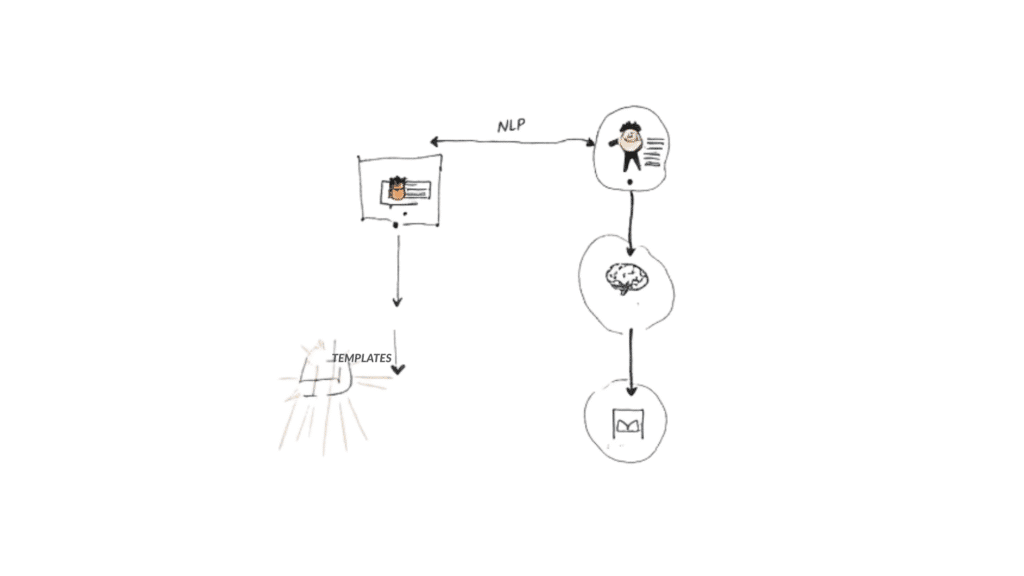
NLP
To understand why no-code chatbot builders are so effective, it helps to look at their core components. It’s a combination of powerful, user-friendly features working together to turn your ideas into automated conversations that get results.
Let’s break down the engine powering these platforms.
The Visual Drag-and-Drop Editor
At the heart of every no-code chatbot builder is the visual drag-and-drop editor. Think of it as a digital whiteboard designed specifically for conversations. Instead of writing code, you visually map out every step of the user’s journey.
You drag elements like text bubbles, questions, buttons, and images onto the canvas and connect them with lines to create a logical flow. It’s intuitive because it mirrors how you’d naturally sketch out a conversation.
Practical Example: A real estate agent could build a lead qualification bot in minutes:
- Start with a “Welcome Message” block: “Hi! Thanks for visiting. Are you looking to buy or sell a home?”
- Add a “Button” block: Offer two choices: “I’m looking to buy” and “I’m looking to sell.”
- Connect each button to a new path: The “buy” path asks about budget and location, while the “sell” path asks for the property address.
This visual process removes the guesswork. You can see the entire conversation laid out, making it easy to spot dead ends or areas for improvement before your bot ever interacts with a real customer.
Pre-Built Templates for a Head Start
Staring at a blank canvas can be intimidating. That’s why the best no-code chatbot builders come loaded with pre-built templates. These are proven, customizable frameworks designed for common business goals.
Instead of building a lead generation flow from scratch, you can load a template that already has the essential questions and logic wired in. This dramatically speeds up development and ensures you’re following best practices from the start.
Think of templates as a launchpad. They handle 80% of the foundational work, letting you focus on the final 20%—the unique details that align the chatbot with your brand voice and specific goals.
You’ll find templates for common use cases like:
- FAQ Bot: Instantly answers the most common questions to free up your support team.
- Lead Magnet Delivery: Captures an email address in exchange for a free guide or resource.
- Abandoned Cart Recovery: Re-engages e-commerce shoppers who left items in their cart.
- Appointment Booker: Qualifies leads and schedules meetings directly on your calendar.
AI and Natural Language Processing
This is where the real intelligence comes in. Modern no-code chatbots are powered by Artificial Intelligence (AI) and Natural Language Processing (NLP). Simply put, NLP allows a bot to understand the intent behind a user’s words, not just the exact keywords they type.
An old, rule-based bot might only recognize “track order.” But an NLP-powered bot can understand that “where is my stuff?”, “shipping status?”, and “when will my package get here?” all mean the same thing. This makes the conversation feel far more natural and human, leading to a better user experience.
Seamless Third-Party Integrations
A chatbot becomes infinitely more powerful when it can communicate with the other tools you use to run your business. Third-party integrations are the bridges that connect your chatbot to your wider software ecosystem.
This turns your bot from a simple Q&A tool into a central hub for automation. By connecting to other software, your chatbot can actually do things, not just provide information.
For example:
- An integration with your CRM allows the bot to automatically create a new lead record.
- Connecting to an email marketing platform lets it add a new subscriber to a specific list.
- An integration with an e-commerce platform like Shopify enables the bot to check an order’s real-time status.
These connections create a smooth, automated workflow that saves time and eliminates manual data entry.
See No Code Chatbots Driving Real Business Results
The true value of a no-code chatbot builder isn’t the technology itself—it’s the tangible business outcomes it produces. Let’s move beyond the features and look at how these tools solve real-world problems, turning automated conversations into measurable growth and happier customers.
Think of a well-built chatbot as your most reliable employee—one that works 24/7 to hit specific goals without ever needing a coffee break.
E-commerce: The 24/7 Personal Shopper
For any online store, the digital shopping experience is everything. A no-code chatbot can transform a static website into a dynamic, helpful storefront, guiding customers just like a sharp sales associate would in a physical shop.
The Problem: An online fashion retailer was losing sales. Shoppers felt overwhelmed by too many options and were abandoning their carts. The support team was bogged down with repetitive questions about sizing, materials, and returns.
The No-Code Chatbot Solution: They used a no-code builder to create a “Style Assistant” bot. This bot proactively engaged visitors the moment they landed on the site.
- Product Discovery: It acted as a personal stylist, asking shoppers about their preferences (“Are you looking for something casual or formal?”) and budget to serve up tailored recommendations.
- Cart Recovery: If a user started to leave with items in their cart, the bot would trigger a message like, “Hey, did you forget something? We offer free shipping on this order!” to seal the deal.
- FAQ Automation: The bot was trained on the store’s help documentation, allowing it to instantly answer common questions about shipping times, return policies, and size charts.
The Measurable Outcome: Within three months, the retailer saw a 15% reduction in abandoned carts and a 10% increase in average order value. Even better, the support team reported a 40% drop in repetitive support tickets, freeing them up to handle more complex customer issues.
Real Estate: The Automated Lead Qualifier
In the fast-paced world of real estate, an agent’s time is their most valuable asset. Every minute spent chasing unqualified leads or answering basic questions is a minute they aren’t closing deals.
The Problem: A busy real estate agency was getting swamped with website inquiries. Agents were burning hours on the phone asking the same screening questions to determine if a lead was serious. It was inefficient, and high-quality leads were slipping through the cracks.
The No Code Chatbot Solution: The agency deployed a chatbot on their website to act as a virtual assistant, qualifying leads and booking appointments automatically.
This chatbot became the first point of contact for every new visitor, instantly engaging them with a structured, yet conversational, screening process. It seamlessly handled the initial discovery phase, ensuring agents only spoke with highly-qualified, motivated buyers and sellers.
The bot was programmed to ask crucial qualifying questions:
- Are you looking to buy or sell?
- What’s your desired neighborhood and budget?
- Have you been pre-approved for a mortgage?
- What’s your timeline for moving?
Based on the answers, the bot would either book a viewing directly on an agent’s calendar or, if the lead wasn’t quite ready, capture their info for a follow-up nurturing campaign.
The Measurable Outcome: The agency reduced time spent on initial lead qualification by 50%. With agents focusing their energy on high-value conversations, they saw a 20% increase in scheduled property viewings with qualified buyers in the first quarter alone.
SaaS: The Proactive Onboarding Guide
For a Software-as-a-Service (SaaS) company, the first few days a user spends with the product are critical. A confusing start almost guarantees they’ll churn.
The Problem: A SaaS startup noticed new users were dropping off within the first week. Their support team was buried under basic “how-to” questions, and it was clear their onboarding documentation wasn’t being read.
The No Code Chatbot Solution: They built an in-app chatbot to proactively guide new users through the platform’s key features. No-code chatbots can be a crucial part of a wider marketing automation strategy that helps small businesses save time and grow.
- Guided Tours: When a user logged in for the first time, the chatbot offered interactive, step-by-step walkthroughs of essential functions.
- Contextual Help: The bot was smart enough to know which page the user was on, providing relevant tips and answers in real-time so they never had to leave the app to find help.
- Smart Escalation: If the bot couldn’t answer a question, it collected the user’s details and the chat history to create a support ticket, ensuring a smooth handoff to a human agent.
The Measurable Outcome: The company saw a 25% improvement in user retention after 30 days. The volume of basic support tickets also plummeted by over 60%, allowing the support team to focus on solving more complex customer issues.
How to Choose the Right No-Code Chatbot Builder
With so many platforms on the market, picking the perfect no-code chatbot builder can feel overwhelming. It’s easy to get lost in flashy features and technical jargon.
The secret is to tune out the noise and ask one simple question: What is the single most important job I need this chatbot to do?
Getting crystal clear on your primary goal simplifies everything. Are you trying to capture more leads? Slash your support ticket volume? Or boost online sales? Answering this question first will instantly narrow your options and point you toward a tool that delivers the results you need.
Start With Your Primary Business Goal
Before comparing a single feature, define your finish line. A chatbot built for lead generation looks completely different from one designed for complex customer support. Each goal demands a specific set of tools.
For instance, if your main objective is capturing more qualified leads, your focus should be on features that create smooth conversations and make data capture effortless. You’ll want a builder that makes it easy to ask screening questions and integrates seamlessly with your CRM. You can find some great examples and strategies by exploring the best chatbot for lead generation.
This decision tree infographic visualizes how your primary goal—whether it’s boosting sales, generating leads, or providing support—points you toward the right type of solution.
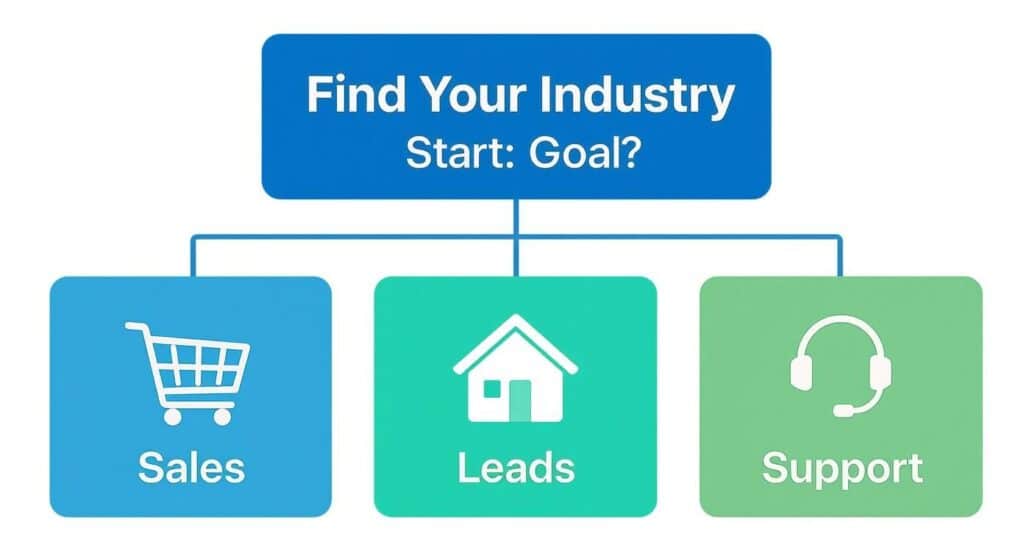
Finding your industry
As the graphic shows, the most effective path starts with a specific business need. That need then dictates the must-have features and integrations.
Evaluate Key Platform Criteria
Once your goal is locked in, you can start evaluating options based on a few critical criteria. This isn’t about finding a tool that does everything; it’s about finding the one that excels at what you need most.
Here are the core factors to consider:
- Ease of Use: How intuitive is the visual builder? A good platform should feel more like drawing on a whiteboard than wrestling with software. Look for a clean drag-and-drop interface and helpful tutorials.
- Integration Capabilities: A chatbot is only as powerful as the tools it connects to. Check for native integrations with your CRM (like HubSpot or Salesforce), email marketing platform, and e-commerce software.
- Scalability: Will this platform grow with you? Consider what happens as your subscriber list or conversation volume increases. A scalable solution handles more traffic without a massive price jump or performance issues.
- Pricing and Value: Look beyond the monthly fee. Analyze what you actually get for your money—the number of subscribers, monthly conversations, and access to premium features. The best value comes from a plan that aligns with your goal.
A common mistake is choosing a platform packed with advanced AI features you’ll never use, while it lacks a simple, reliable integration with the CRM your sales team lives in every day. Always prioritize practical function over theoretical power.
Comparing Types of No Code Chatbot Builders
To make this more concrete, here’s how different types of no-code builders stack up based on their primary business objective. This comparison should help you identify which platform type best fits your needs.
Comparing Types of No Code Chatbot Builders
| Platform Type | Best For | Key Features | Typical Pricing Model |
|---|---|---|---|
| Simple Lead Capture Bot | Small businesses & agencies needing to qualify website visitors. | Basic forms, conditional logic, CRM and email integrations, appointment scheduling. | Tiered based on number of leads or subscribers. |
| Advanced Support Automation | SaaS & companies with high ticket volume. | AI & NLP for intent recognition, knowledge base integration, human agent handoff. | Tiered based on conversation volume or AI usage. |
| Specialized E-commerce Bot | Online stores focused on driving sales and recovering carts. | Deep integration with platforms like Shopify, product recommendations, cart abandonment flows. | Tiered based on revenue generated or number of subscribers. |
By aligning your specific needs with the right platform type from the start, you set yourself up for a successful launch and a stronger return on investment.
Best Practices for a Successful Chatbot Launch
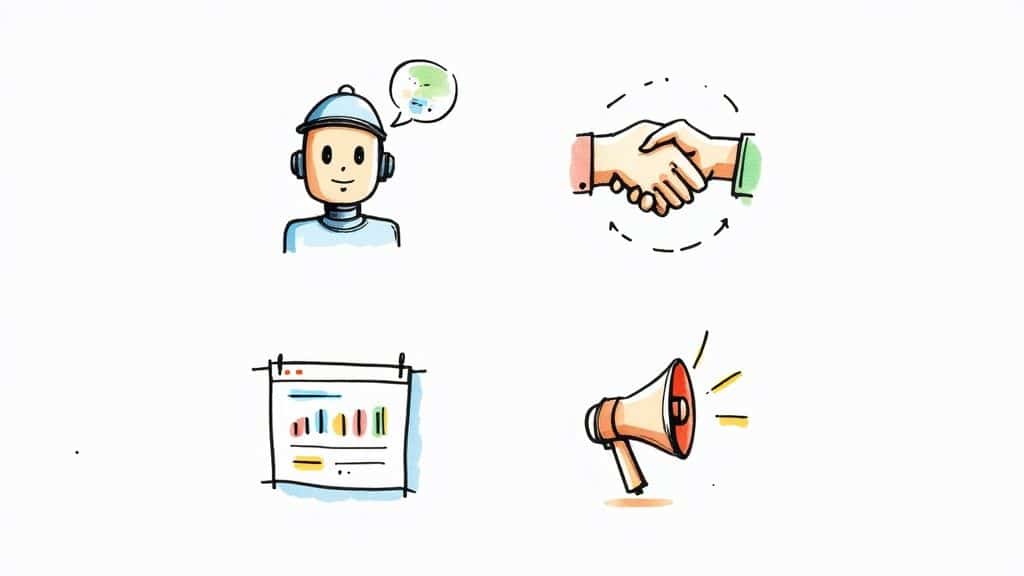
successful chatbot launch
You’ve used a no code chatbot builder to create your bot. Now comes the real test: the launch. A smart launch strategy is what separates a genuinely helpful digital assistant from a frustrating roadblock for your customers.
This isn’t about just flipping a switch. It’s about setting your chatbot up to deliver real value from day one. These actionable practices will help you avoid common pitfalls and ensure your bot makes a great first impression.
Give Your Chatbot a Personality
Your chatbot is an extension of your brand, so it needs a voice. A generic, robotic tone feels cold and impersonal. First, define a personality that matches your company’s vibe. Is your brand playful and witty, or more professional and straight-to-the-point?
Once you decide, weave that tone through every interaction. For example, a trendy e-commerce store’s bot might use emojis and casual language. A financial services firm, on the other hand, would want a bot that sounds formal and reassuring. This consistency makes the experience more engaging and builds trust.
A chatbot without a personality is just a glorified FAQ page. A chatbot with a personality is a brand ambassador that works 24/7, making every conversation feel more human and memorable.
Define One Clear Purpose
One of the biggest mistakes is trying to build a chatbot that does everything. This “all-in-one” approach usually creates a master of none, leaving users confused. The most effective chatbots have a single, sharply defined purpose.
Start by pinpointing the #1 problem you need to solve.
- Goal: Cut down on support tickets? Build an FAQ bot that’s an expert at answering common questions.
- Goal: Get more sales meetings? Design a lead qualification bot that excels at booking demos.
- Goal: Increase revenue? Create an e-commerce bot that gives excellent product recommendations.
By keeping the scope narrow, you create an experience that’s far more effective and intuitive. Users know exactly what the bot is for, which leads to higher satisfaction and better results.
Create a Seamless Human Handoff
No matter how smart your chatbot is, some questions will stump it. There will always be situations that require a human touch. A conversational dead-end is a terrible customer experience, which is why a seamless human handoff process is essential.
Design your conversation flow to recognize when a user is frustrated or asks for a person. At that point, the bot should collect their contact details and a summary of the issue. This context gets passed directly to your support team, so the customer doesn’t have to repeat themselves. It turns a potential point of friction into a smooth, professional handoff.
To dive deeper into this and other key strategies, check out our guide on chatbot best practices for top-tier performance.
Promote and Refine Your Chatbot
A launch isn’t a one-and-done event; it’s the beginning. You need to let people know your chatbot exists and then commit to making it smarter over time.
- Promote Your Bot: Announce your new digital assistant in your email newsletter, on social media, and with a banner on your website. Highlight its specific purpose so people know exactly how it can help them.
- Analyze Conversation Logs: Your chatbot’s conversation logs are a goldmine of insights. Regularly review them to see where users get stuck, what questions your bot can’t answer, and how you can improve its responses.
- Iterate and Improve: Use the data from your logs to refine the bot’s conversation flows and expand its knowledge. This commitment to continuous improvement is what turns a good bot into a great one.
Where No-Code and AI Are Headed Next
The no-code movement has already put powerful automation into the hands of marketers and entrepreneurs. But this is just the beginning. The real innovation is happening at the intersection of no-code builders and the latest advancements in conversational AI. We’re moving toward a future where customer interactions aren’t just automated—they’re genuinely intelligent and personal.
This isn’t about small tweaks. We’re on the verge of a massive shift where chatbots evolve from script-following assistants into proactive partners that understand context, anticipate customer needs, and hold surprisingly human-like conversations.
Generative AI is Changing the Game
The biggest driver of this change is generative AI—the same technology behind models like GPT. Instead of being limited to pre-programmed responses, the next wave of no-code chatbots will create unique, context-aware replies on the fly. This means they can handle unexpected questions, understand conversational nuance, and even adapt their tone based on the user’s sentiment.
Imagine a support bot that doesn’t just link to a help article. Instead, it summarizes the key steps, asks clarifying questions, and offers personalized troubleshooting advice based on that specific user’s problem. That’s a leap from a simple tool to a true problem-solving asset.
This explosive growth is rocking the industry. The chatbot market, valued at $7.76 billion in 2024, is expected to skyrocket to $27.29 billion by 2030. That’s a clear signal of the strategic value businesses see in this technology. You can dig into the full chatbot market forecast to see exactly where things are headed.
Get Ready for Hyper-Personalization and Voice
Beyond smarter text chats, two other trends are set to define the future: hyper-personalization and voice.
- Hyper-Personalization at Scale: Tomorrow’s chatbots will plug directly into your business data to create one-of-a-kind experiences. An e-commerce bot won’t just offer generic recommendations. It will remember a customer’s past purchases, browsing history, and style preferences to make suggestions that feel like they came from a personal shopper.
- The Big Shift to Voice: As smart speakers and voice assistants become a normal part of life, voice-enabled chatbots are the next logical step. Soon, customers will be able to simply talk to your brand to get an order update, book a service, or ask for help with a product. No typing required.
The ultimate goal is to make talking to a business feel as easy and natural as talking to a person. No-code platforms are the bridge that will make this sophisticated technology accessible to everyone, not just large corporations.
This brings us full circle. The future of the no-code chatbot builder is about democratizing ever-more-powerful AI, empowering you to build deeper, more meaningful customer relationships, one conversation at a time.
Have Questions? We Have Answers.
Stepping into the world of no-code chatbots can feel like learning a new language. It’s exciting, but you probably have a few questions. Let’s tackle the most common ones so you can get started with confidence.
Ready to build smarter conversations and put your growth on autopilot? Clepher gives you an intuitive, no-code platform to design powerful AI chatbots for your website, Messenger, and Instagram. Start your journey with Clepher today!
Related Posts

